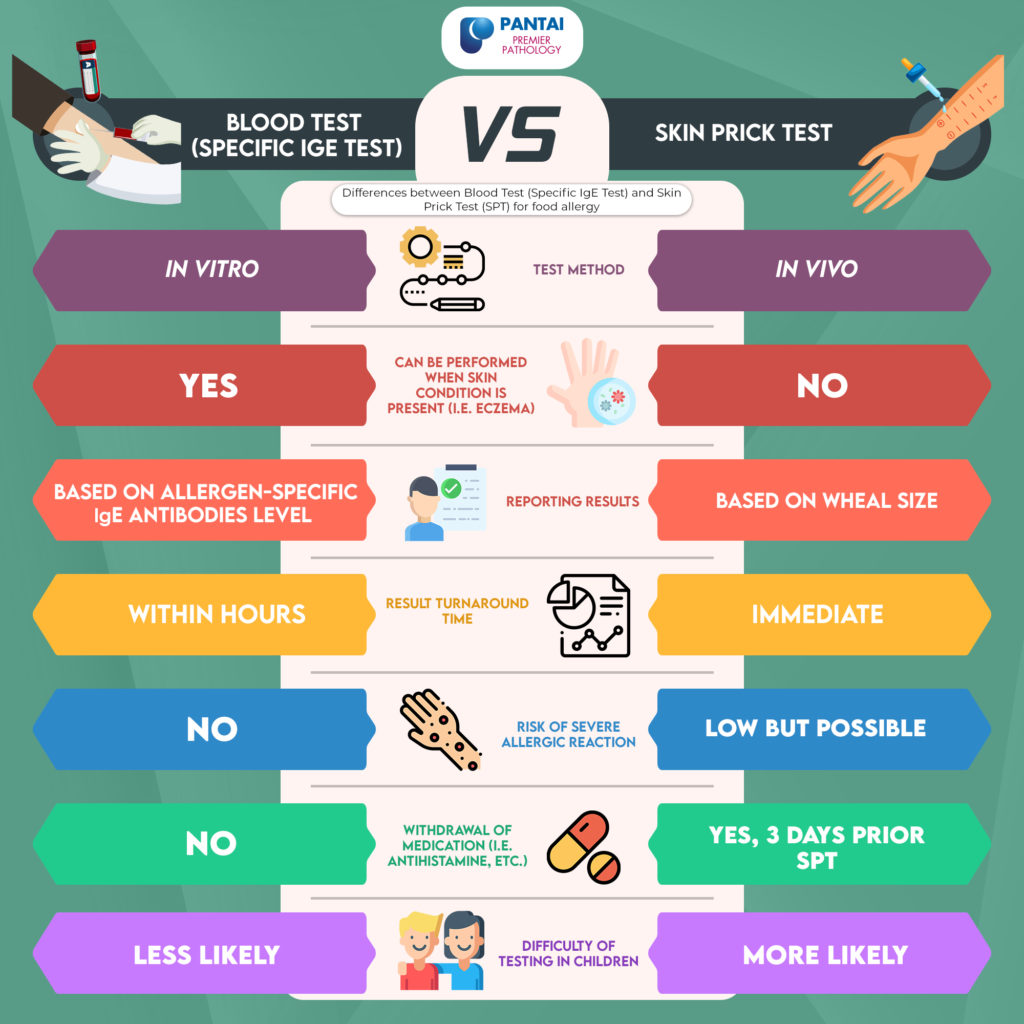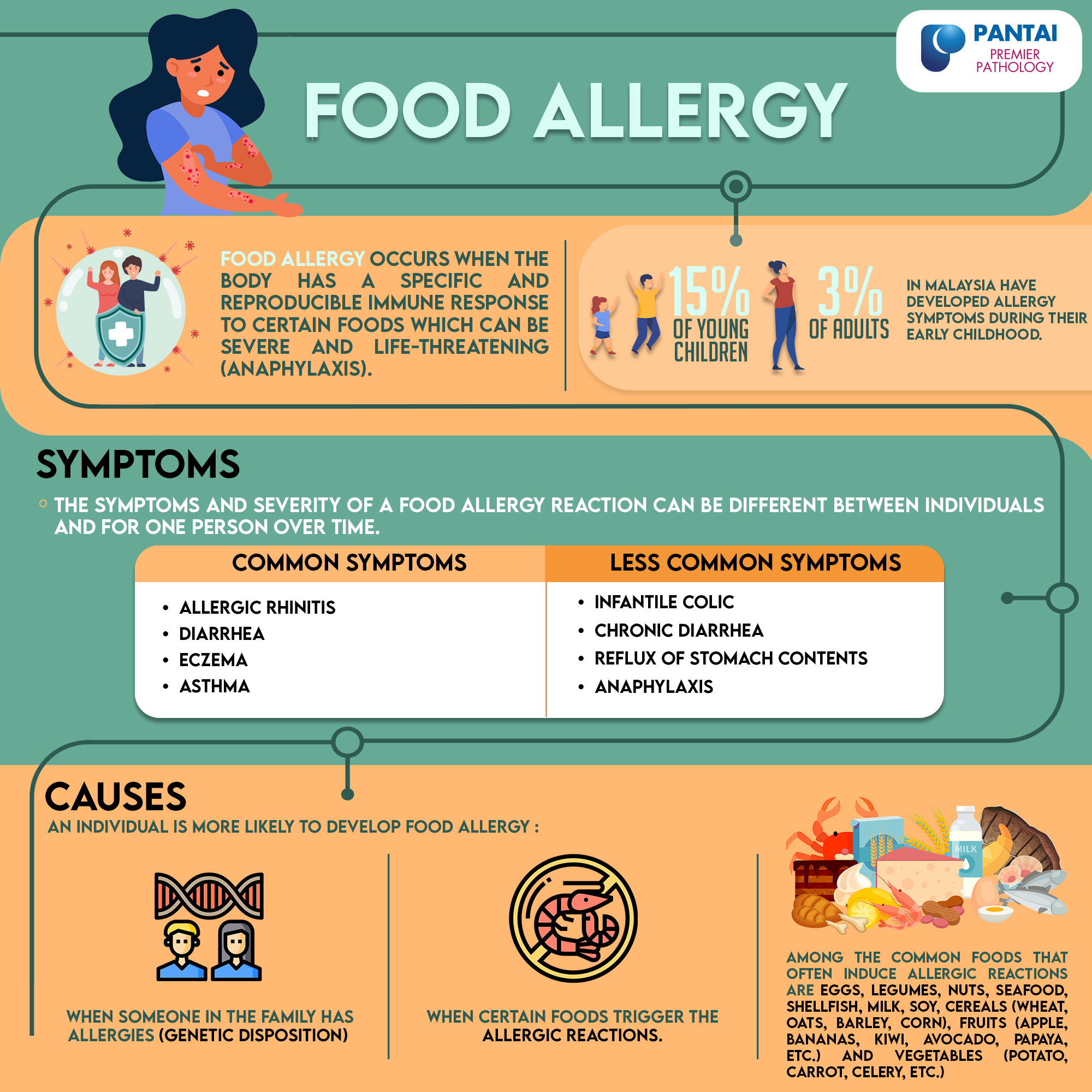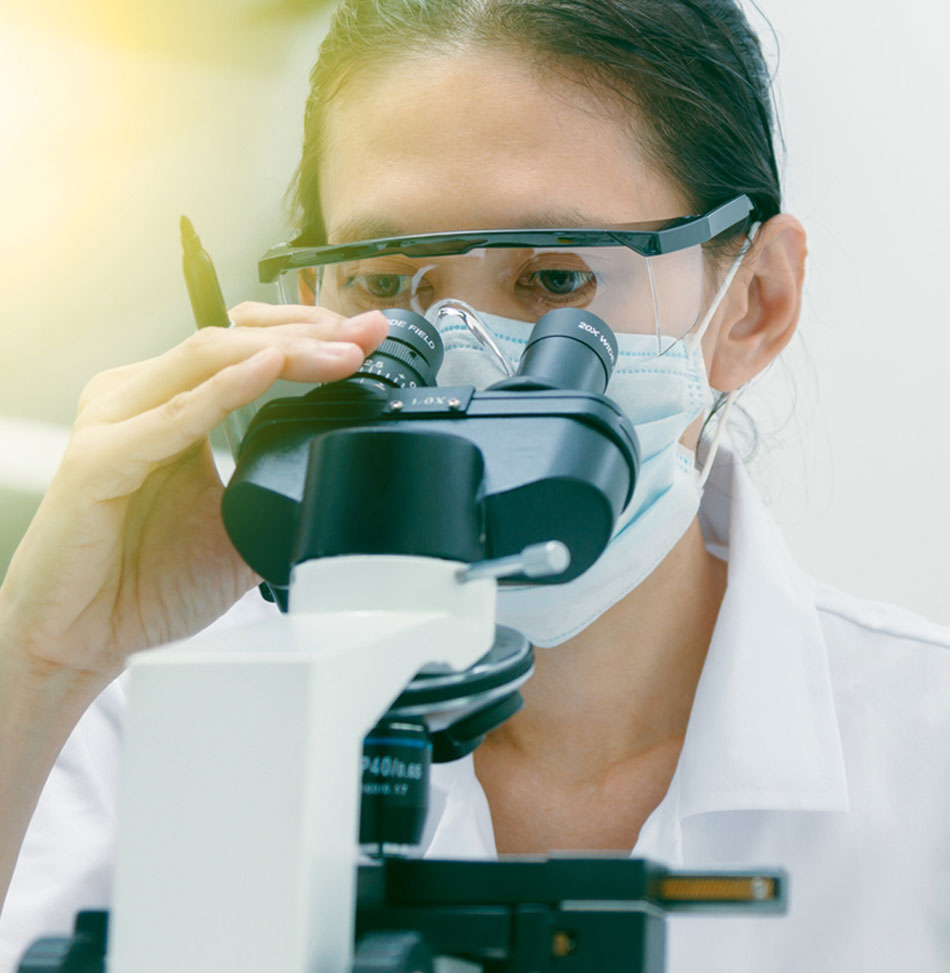Food Allergy | Causes, Symptoms and Diagnostic Tools
Food Allergy
Food allergy is a serious public health issue with an increasing prevalence that affects both the children and adults.1 It occurs when the body has a specific and reproducible immune response to certain foods which can be severe and life-threatening (anaphylaxis).2 This disease is also associated with an increased morbidity, affecting the daily quality of life.3
Symptoms
The symptoms and severity of a food allergy reaction can be different between individuals and for one person over time.2
Around 15% of young children and 3% of adults in Malaysia have developed allergy symptoms during their early childhood.4, 5 Food allergy reactions usually include the three main systems which are the digestive system, skin and respiratory system.6 The most common symptoms are allergic rhinitis, diarrhea, eczema and asthma, whereas, less common manifestations are infantile colic, chronic diarrhea, reflux of stomach contents, failure to thrive in children and anaphylaxis.4, 6 In some individuals, allergic reactions to food are mild but some may experience severe reactions that can result in death.6
Causes
An individual is more likely to develop food allergy when someone in the family has allergies (genetic disposition) or when certain foods trigger the allergic reactions. Among the common foods that often induce allergic reactions are eggs, legumes, nuts, seafood, shellfish, milk, soy, cereals (wheat, oats, barley, corn), fruits (apple, bananas, kiwi, avocado, papaya, etc.) and vegetables (potato, carrot, celery, etc.).2, 6
Diagnostic Tool
The most common diagnostic tests to evaluate IgE- mediated food allergy are skin prick test (SPT) or blood test specific IgE to allergens. 7, 8
The table below summarises the comparison between blood test which measures specific IgE to allergens and skin prick test.
Table 1: Summary of differences between Blood Test (Specific IgE Test) and Skin Prick Test (SPT)9

At Pantai Premier Pathology, we provide Single Allergen Testing and Multiple Allergen Testing to test for Allergy. For more information on the tests provided, please contact us at +603-42809115 (Customer Service) or email us at info@premierpathology.com.my.
References:
- Panel, N. S. E. (2010). Guidelines for the diagnosis and management of food allergy in the United States: report of the NIAID-sponsored expert panel. Journal of Allergy and Clinical Immunology, 126(6), S1-S58.
- Food Allergies. (n.d.). Centers for Disease Control and Prevention. Retrieved July 27, 2020, from https://www.cdc.gov/healthyschools/foodallergies/
- Sampson, H. A., Aceves, S., Bock, S. A., James, J., Jones, S., Lang, D., … & Randolph, C. (2014). Food allergy: a practice parameter update—2014. Journal of Allergy and Clinical Immunology, 134(5), 1016-1025.
- Yadav, D. M. (2009b). Food allergy in infants and children. Allergy Center Malaysia. http://www.allergycentre.com.my/infants.html
- Yadav, D. M. (2009a). Food allergy in adults. Allergy Center Malaysia. http://www.allergycentre.com.my/adults.html
- Lim Nyok Ling, D. D., & Lim Sern Chin, D. (n.d.). Food Allergy. MyHEALTH. Retrieved July 27, 2020, from http://www.myhealth.gov.my/en/food-allergy-2/
- Abrams, E. M., & Sicherer, S. H. (2016). Diagnosis and management of food allergy. Cmaj, 188(15), 1087-1093.
- Boyce, J. A., Assa’ad, A., Burks, A. W., Jones, S. M., Sampson, H. A., Wood, R. A., Plaut, M., Cooper, S. F., Fenton, M. J., Arshad, S. H., Bahna, S. L., Beck, L. A., Byrd-Bredbenner, C., Camargo, C. A., Jr, Eichenfield, L., Furuta, G. T., Hanifin, J. M., Jones, C., Kraft, M., Levy, B. D., … NIAID-Sponsored Expert Panel (2010). Guidelines for the Diagnosis and Management of Food Allergy in the United States: Summary of the NIAID-Sponsored Expert Panel Report. The Journal of allergy and clinical immunology, 126(6), 1105–1118. https://doi.org/10.1016/j.jaci.2010.10.008
- Ansotegui, I. J., Melioli, G., Canonica, G. W., Caraballo, L., Villa, E., Ebisawa, M., … & Sánchez, O. L. (2020). IgE allergy diagnostics and other relevant tests in allergy, a World Allergy Organization position paper. World Allergy Organization Journal, 13(2), 100080.



